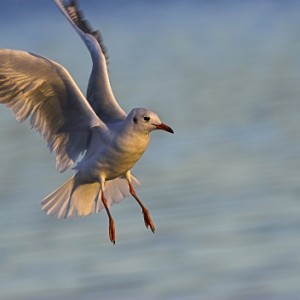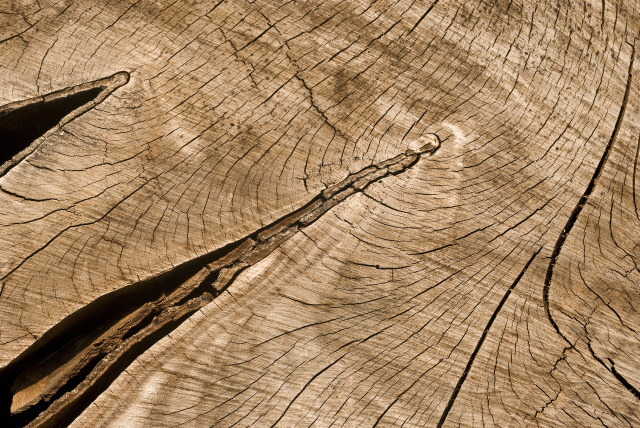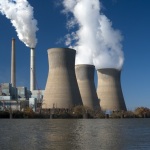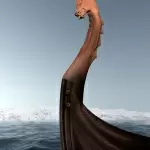
Birds have been a prominent feature of life on Earth for eons. The adaptations commonly associated with this group of animals, such as feathers, hollow bones, and air sacs, evolved in piecemeal fashion almost as soon as dinosaurs arose over 230 million years ago.1 Present day birds evolved from theropod dinosaurs, a lineage that includes Tyrannosaurs and Velociraptor. Around 150 million years ago during the late Jurassic, Archaeopteryx, considered a transitional form between dinosaurs and birds, first took to the skies.1 This opened up a vacant niche for these animals and evolution advanced rapidly, eventually giving rise to the 10,000 known bird species living today.
Despite this ancient history, birds today face an increasing number of threats to their existence, especially from anthropogenic climate change. While some of these seem relatively minor, experts predict that climate change could send more than half of the bird species in North America to join their ancestors in extinction.2 A thorough understanding of the ways in which climate change can impact birds is essential in predicting extinction risk and in developing possible mitigation strategies.
Climate Change
To assess how climate change will impact birds, exploring how the planet is actually changing is a prudent first step. Climate change is predominately driven by increases in greenhouse gas emissions like carbon dioxide into the atmosphere. Prior to the Industrial Revolution, carbon dioxide levels in the atmosphere were 280 ppm. Today levels have increased by about 30% to 370 ppm. 3 This level is greater than it has been at any point in the last 800,000 years and possibly greater than it has been over the past 20 million years.4 In addition to this increase in magnitude, the current rate of increase is at least 100 times faster than it has been at any point in the last 600,000 years and this rate may be unprecedented in the history of the planet.5
These greenhouse gas emissions into the atmosphere have resulted in a global temperature increase of 1.3�F over the past century. Two thirds of that increase has occurred over the last twenty-five years at an increasingly fast rate of 0.3-0.4�F per decade. Temperatures in the Arctic have increased more than twice that of the rest of the planet.6 Average global temperatures are expected to increase more than 2�F by the end of the century.
An obvious consequence of this warming is a hotter climate in many regions of the globe. Climate change will also cause prolonged droughts and wildfires in many arid regions, such as the southwestern United States. Tropical regions will see an increase in the intensity and frequency of hurricanes. This will incur flooding as well as damages from high winds. Sea level is projected to rise as glaciers melt, eroding beaches and coasts. While the ocean warms, it will also become more acidic as it takes up an increasing amount of carbon dioxide from the atmosphere. These changes will dramatically change many habitats, with important consequences for the birds that rely on them for survival.6
Phenology
Climate change has already been documented to impact the phenology, or timing of natural events, of birds. Because temperatures serves as a trigger for many species to undertake important events like migration or reproduction, shifts in temperatures can change when these activities take place.
A good example of how this can impact birds comes from a long-term study of great tits (Parus major) in Europe.7 These birds time reproduction to when prey will be most abundant for nestlings, as those raised during peak prey abundance are heavier and have increased survival rates. Their main prey consists of caterpillars in oak trees, which emerge during tree bud burst in the spring, before pupating in the soil. This leaves a narrow window in which to time reproduction to coincide with peaks in prey abundance. To accomplish this, birds use temperature as a cue to initiate reproduction.
Warmer temperatures have led birds to breeding earlier in the spring.7 However, temperatures have also begun increasing more rapidly over the course of the season. This means that caterpillars are emerging sooner and most birds lay clutches too late for them to take advantage of the peak in prey. In essence, the cues the birds are using to reproduce are not matching up with the peak prey availability. This can diminish reproductive output and endanger population survival.
These problems are intensified in migratory species. Pied flycatchers (Ficedula hypoleuca) have been studied in the same habitat as the aforementioned great tits.8 These birds are different in that they overwinter in tropical Africa before migrating to Europe in the spring to breed. They use day-length variation in their wintering grounds as a cue for migration, which is not based on temperature. Because prey availability is based on temperature, it has started earlier in the year, which has resulted in birds not arriving at breeding grounds in time to take advantage of peak prey. This represents a mismatch in cues because migrations are independent of temperature and thus birds cannot alter migration patterns as the climate changes. As a result, reproductive output has dropped and populations have declined by more than 90% in some areas.8 Those populations with the earliest food peaks have had the largest declines, indicating that decreased prey availability is a major factor in these declines.
Range & Distribution
As the planet warms, it will alter habitat, which could decrease the ranges of many species. Rare species that are adapted to very specific habitats, such as those at the tops of mountains, are projected to be the most at risk. Species at the poles are very susceptible as well. The ranges of boreal birds in Northern Europe are predicted to decrease by more than 73% over the next century.9 Birds in more tropical regions may be able to expand their range as temperatures rise, but birds in northern Europe are blocked from northward expansion by the Arctic Ocean. The impacts of climate change on bird ranges are not uniform, but will likely vary across different latitudes and be dependent on their ecological requirements.
Habitat Destruction
While some species will face shrinking ranges, others will face habitat destruction from climate change. Many birds in North America stopover in intertidal mud flats during their migrations, where they forage on invertebrates. Sea level rise is projected to cause the loss of up to 70% of this habitat in some locations, jeopardizing the existence of these birds.10 Many birds that inhabit coastal areas, such as piping plovers (Charadrius melodus), lay their eggs directly on the sand of the beach in a shallow depression.11 The erosion of beaches from sea level rise will decrease the availability of this nesting habitat. Larger storm surges also will cause nests to be lost to the ocean.
Birds that rely on coral reefs will face similar challenges. About one third of the carbon dioxide in the atmosphere is taken up by the ocean, which makes the water more acidic. Increased acidity inhibits the ability of corals to secrete calcium carbonate, which forms the structure of the reef. As a result, they become brittle and prone to breaking.12 Decreased skeletal density and shrinkages in reef structure have been documented in many oceans.13 For many birds in the tropics, coral reefs provide an important food source and are critical habitats for their survival. The degradation of reefs from climate change poses serious risks for these birds.
The pothole prairie region of the Great Plains provides another important example of potential habitat loss. This region is covered with millions of glacially formed lakes that comprise one of the most productive habitats for waterfowl in North America, producing more than half of the ducks on the continent.14 Increasing temperatures and decreasing precipitation will lead to many of these wetlands drying out. Birds may have to shift from the more productive wetlands in the center of the region to those located on the fringes, where wetlands are less productive and many have been drained for agricultural use.
Invasions and Outbreaks
Climate change may also facilitate the range expansion of invasive species, many of which are inhibited in their ranges by temperatures. The hemlock wooly adelgid (Adelges tsugae) is an insect introduced from Japan that has caused widespread mortality of hemlock trees across the Eastern United States.15 Winter temperatures prohibit the northward expansion of this pest, and have insulated some forests from its devastation. As temperatures become warmer, however, the pest may spread into new forests, causing even more destruction. Similarly, invasive plants like glossy buckthorn (Frangula alnus) and Oriental bittersweet (Celastrus orbiculatus) may spread into new forest regions as temperature increases lift inhibitions on range expansion. These plants are both detrimental for forests because they reduce recruitment of trees that provide canopy cover and can damage trees as well. In addition to range contractions, many species will also have to contend with invasive species expansions, which will make the habitat remaining to them less suitable.
The health of many bird populations may also be affected by disease outbreaks. In Hawaii, mosquitoes that carry malaria are limited by temperature changes along altitude gradients.16 This means that malaria outbreaks are more common at lower altitudes, but higher areas on mountaintops create a refuge for birds because mosquitoes cannot reach the area. Increasing temperatures have led mosquitoes to move further up the mountain slopes, threatening the birds that live at the top of the mountain. Avian malaria is thought to be a major cause in the decline of endemic Hawaiian birds, so its spread is sure to have a strong negative effect on bird populations.
Consequences
These long-term impacts on birds from climate change are not well understood. Many species will face extinction. The consequences of climate change are even more complex when combined with other anthropogenic threats. For example, the cerulean warbler (Setophaga cerulean) spends winters in the Andes and then migrates to the Appalachian Mountains to breed. Its range has already been restricted from development for coffee plantations in its winter grounds and coal mining in its breeding grounds.2 These prior habitat alterations make it even more susceptible to declines from climate change. Birds in tropical rainforests have been shown to not cross clearings for roads because they do not want to leave the shelter of the canopy.17 In places where the habitat has already been fragmented by roads, birds may be hesitant to cross them, which could hamper their ability to move into new habitats.
In many cases, there will also likely be interactions with native species when a bird expands its range. For example, ospreys are projected to lose 68 percent of their breeding range and may become a year-round resident of Florida.2 Pelicans are expected to increase their coastal ranges by 89%.2 These birds may be a source of food competition with birds already in the area, which could put additional stressors on them. They may also over exploit prey sources, leading to trophic cascades that affect the entire ecosystem. Ospreys have also been documented eating other birds, so they may pose a threat to birds in the area, particularly if fish become scarce. There will likely be complex system-wide interactions as birds expand their ranges.
The loss of many bird species would result in losses of the ecosystem services they provide, many of which will be increasingly important as the planet becomes warmer. For example, salt marshes serve as a buffer from storm surge, preventing coastal erosion. Birds that inhabit these areas contribute to marsh health by aiding in nutrient cycling.18 Without birds, marshes will deteriorate and not be as effective in protecting against floods as coastal areas face more and more storms.
Loss of waterfowl from the productive wetlands of the Great Plains would eliminate them as a recreation source for hunters, as well as the revenue hunting permits provide to governmental agencies. There would also be significant cultural impacts from bird losses. The bald eagle, which is iconic to the United States and factors heavily in many Native American religions, is expected to lose 75% of its range by 2080.2 These cultural losses may not have tangible consequences, but would certainly be lamented by most people. It would also rob future generations of the opportunity to view these birds in the wild.
Solutions
The most obvious solution to these issues would be to stop climate change, but this is extremely complicated, but economically and politically. Additionally, even if we stopped emitting greenhouse gases into the atmosphere, there would be continued warming from the gases already emitted.2 Birds will certainly have to contend with a warmer plant in the coming years.
Habitat restoration and protection is an important step for many birds. As forests in Northern Europe shrink, creating refuges where human activities do not endanger them will maximize the habitat left available to birds in these forests.9 In particular, preserving large expanses of contiguous habitat will be essential for conservation. In the Great Plains, many wetlands have been converted to agricultural fields. Restoring them back to their prior state would increase habitat for waterfowl and enable some degree of resilience against climate change.14 Constructing artificial nesting sites may also lead to higher reproductive output and population growth for some species.19 Successful conservation strategies will rely on continued collection of data to fully understand the impacts of climate change on birds and prioritizing the habitats and populations that give species the best chance of survival.
Learn about how to become an ornithologist.
Sources
- Brusatte, S.L., et al., Gradual assembly of avian body plan culminated in rapid rates of evolution across the dinosaur-bird transition. Current Biology, 2014. 24(20):2386-2392.
- Nijhuis, M., 2014. A Storm Gathers for North American Birds. Audubon; Available from: http://www.audubon.org/magazine/september-october-2014/a-storm-gathers-north-american-birds.
- Jokiel, P., et al., Ocean acidification and calcifying reef organisms: a mesocosm investigation. Coral Reefs, 2008. 27(3):473-483.
- Steinacher, M., et al., Imminent ocean acidification in the Arctic projected with the NCAR global coupled carbon cycle-climate model. 2009.
- Veron, J., et al., The coral reef crisis: The critical importance of< 350ppm CO 2. Marine Pollution Bulletin, 2009. 58(10):1428-1436.
- 2014. Climate Change Science Overview. US Environmental Protection Agency; Available from: http://www.epa.gov/climatechange/science/overview.html.
- Visser, M.E., L.J. Holleman, and P. Gienapp, Shifts in caterpillar biomass phenology due to climate change and its impact on the breeding biology of an insectivorous bird. Oecologia, 2006. 147(1):164-172.
- Both, C., et al., Climate change and population declines in a long-distance migratory bird. Nature, 2006. 441(7089):81-83.
- Virkkala, R., et al., Projected large-scale range reductions of northern-boreal land bird species due to climate change. Biological Conservation, 2008. 141(5):1343-1353.
- Galbraith, H., et al., Global climate change and sea level rise: potential losses of intertidal habitat for shorebirds. Waterbirds, 2002. 25(2):173-183.
- Piping Plover Critical Habitat US Fish and Wildlife Service; Available from: https://www.fws.gov/species/piping-plover-charadrius-melodus.
- Hoegh-Guldberg, O., Climate change, coral bleaching and the future of the world's coral reefs. Marine and freshwater research, 1999. 50(8):839-866.
- Cantin, N.E., et al., Ocean warming slows coral growth in the central Red Sea. Science, 2010. 329(5989):322-325.
- Johnson, W.C., et al., Vulnerability of northern prairie wetlands to climate change. BioScience, 2005. 55(10):863-872.
- Dukes, J.S., et al., Responses of insect pests, pathogens, and invasive plant species to climate change in the forests of northeastern North America: What can we predict? . Canadian Journal of Forest Research, 2009. 39(2):231-248.
- Atkinson, C.T. and D.A. LaPointe, Introduced avian diseases, climate change, and the future of Hawaiian honeycreepers. Journal of Avian Medicine and Surgery, 2009. 23(1):53-63.
- Laurance, S.G., P.C. Stouffer, and W.F. Laurance, Effects of road clearings on movement patterns of understory rainforest birds in central Amazonia. Conservation Biology, 2004. 18(4):1099-1109.
- Zacheis, A., R.W. Ruess, and J.W. Hupp, Nitrogen dynamics in an Alaskan salt marsh following spring use by geese. Oecologia, 2002. 130(4):600-608.
- Libois, E., et al., Nest boxes: A successful management tool for the conservation of an endangered seabird. Biological Conservation, 2012. 155:39-43.
- Invasive Species: How They Affect the Environment - February 23, 2015
- Birds in a Changing Climate - February 11, 2015
- Environmental Consequences of Fishing Practices - February 6, 2015
Related Articles
Featured Article

Dendrochronology: What Tree Rings Tell Us About Past and Present





